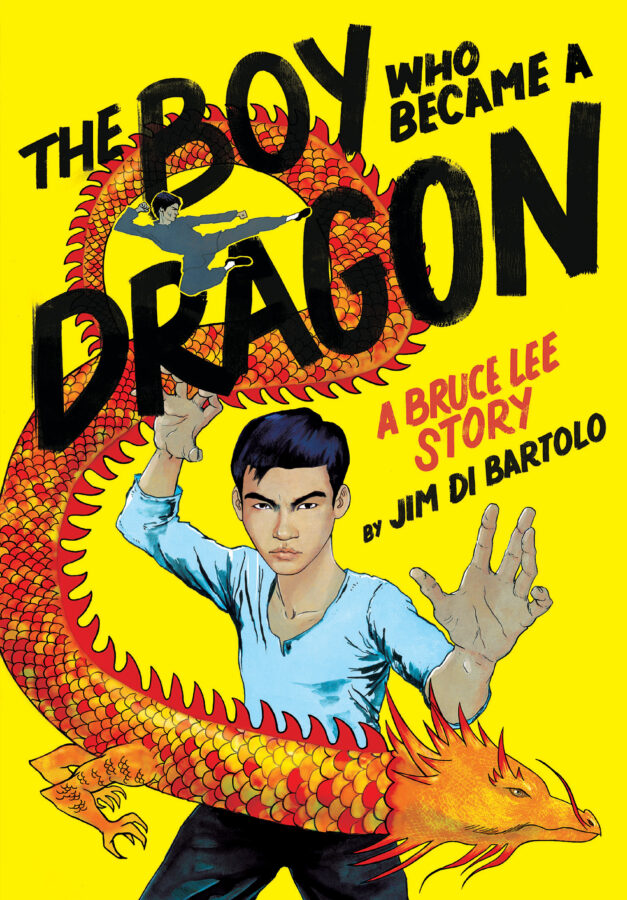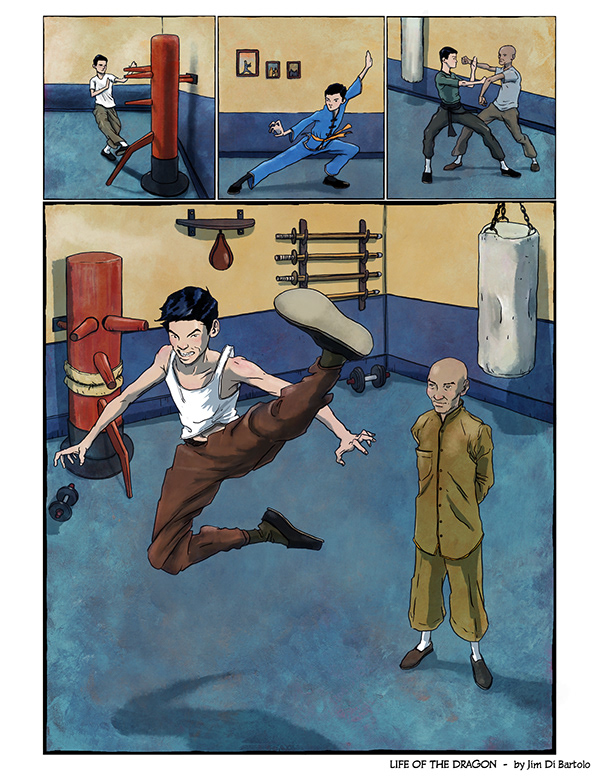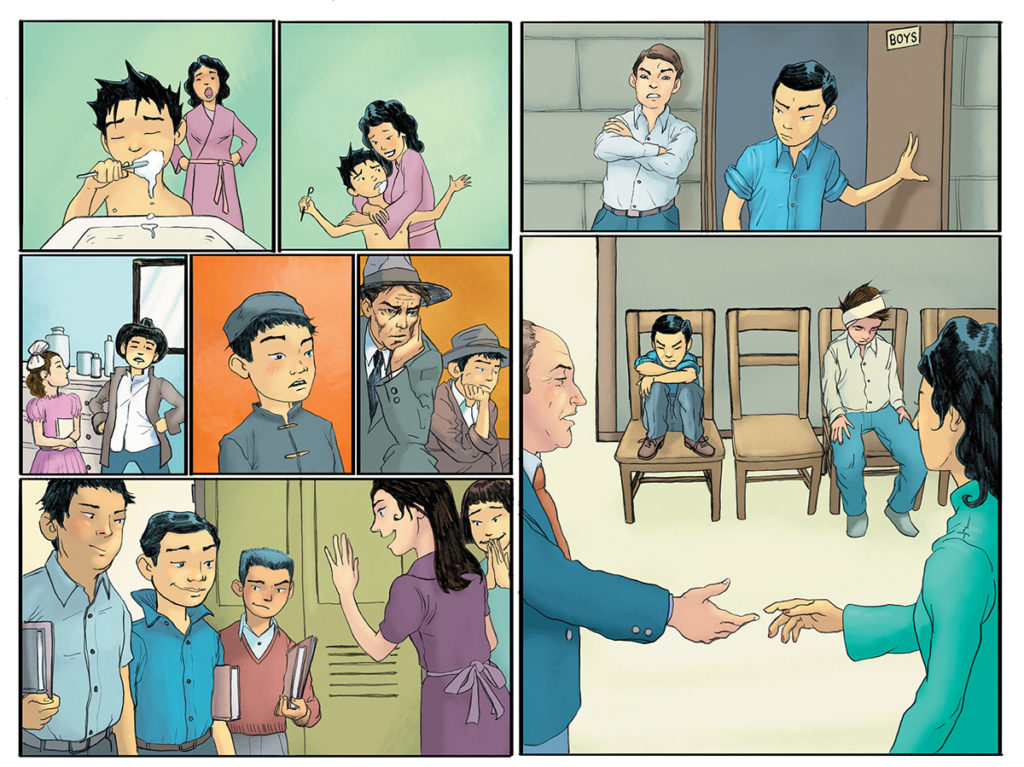Early in my marriage my wife and I set a $25 limit on gifts. The first gift that she gave me under the price restrictions at that time was a Bruce Lee DVD set. That was 13 years ago and I still have the DVDs, plus I’m still married. I mention that to drive home the point that I am a Bruce Lee fan. His talent was stunning and the legacy that he had and left behind is amazing and tragic. The Boy Who Became A Dragon, A Bruce Lee Story by Jim Di Bartolo is a graphic novel that (shockingly…) I expected to enjoy. Once I was finished the book I realized that I enjoyed it for entirely different reasons than I thought that I would.

The Boy Who Became A Dragon digs into Bruce Lee’s early life, family, his early time in school and to an extent, his very early beginnings in cinema. Even our 8 year-old, who has never seen a martial arts film, knows who Bruce Lee was. That’s not because I go on about him at home either, it’s simply due to pop culture awareness.
It’s those upper elementary through middle school audiences that will get the most out of the book. Bruce Lee’s story about growing up in Hong Kong, the issues that he faced from school, his peers, family and his own success are lessons that ages 9 and up will enjoy and relate to.

Martial arts fans or those that know a little about Bruce Lee will enjoy the book more along the vein that I liked it. I know lots about his film history and production notes, but the things that made him who he was are not as well known. Thanks to the Yip Man movies we know that he was the person who first taught Lee kung fu. Have you seen the Yip Man movies? The first two were good, but after that they strained credibility because you, as a viewer, could never determine what was real and what was embellished. Sure, the films were ‘based on a true story’ or at least a real person, but where was the line between fiction and non-fiction?
Some people will have the same issue with The Boy Who Became A Dragon. Di Bartolo has a page at the end of the book addressing the complexities of a graphic novel about such a complex character. Lots of information is certainly known about Bruce Lee; but there are many things that aren’t known and Di Bartolo admits that some elements to his book were created for narrative purposes.
The book stands on its own. It is not a biography of Bruce Lee; it’s a story about a somewhat specific period of his life. Lee was an enigmatic figure and if you’re looking for a concrete vision of his early life, his struggles with racism and possibly criminal activities that he was involved in you won’t enjoy this graphic novel.
The art in Dragon is realistic and poignantly drawn. There’s passion in some of the panels where you’d least expect it, like when a young Bruce Lee ends up in the principal’s office. It’s that look of knowing that you’ve disappointed your parents on some level and wishing that they understood why you had to do it in the first place. Some of the minute touches, like the way Lee arched his fingers, arms or legs when he was about to strike are deftly captured also.

If you’re a fan of Bruce Lee you will love The Boy Who Became A Dragon. If you’re looking for a fun graphic novel that teaches lessons and has great art about a non-fiction character that you know you’ll also like it. Just don’t expect the graphic novel to take on any heady issues and you’ll have a hoot of a good time and just might be inspired to watch (or re-watch) some of his films.




 Facebook
Facebook Twitter
Twitter Flickr
Flickr GooglePlus
GooglePlus Youtube
Youtube